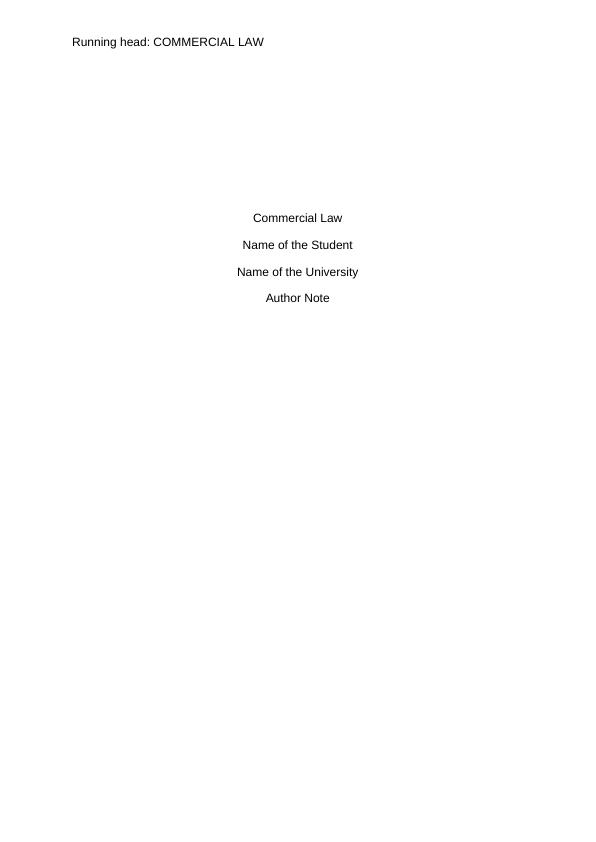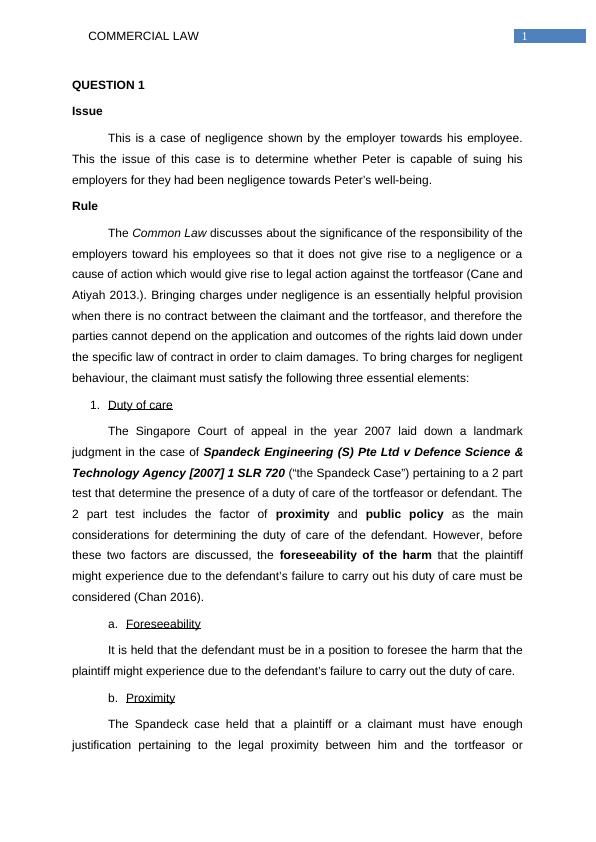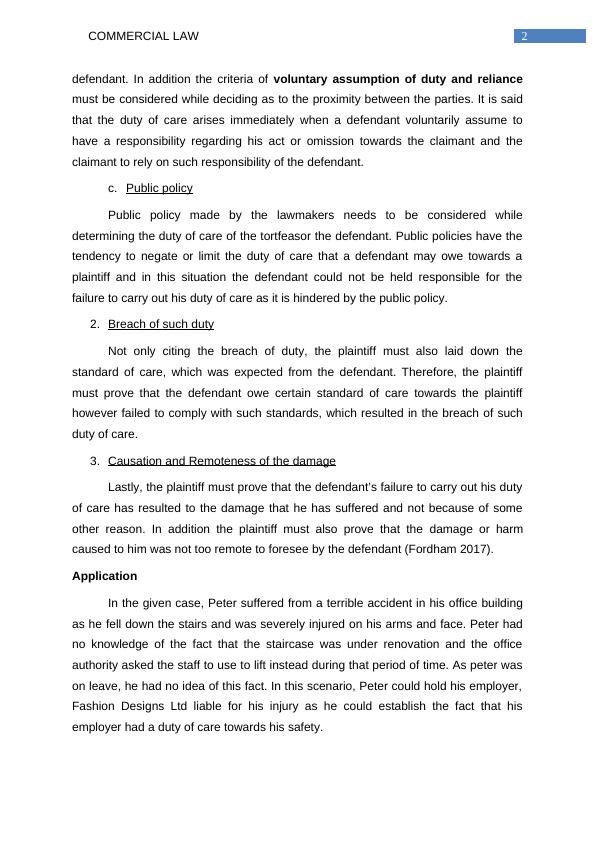Commercial Law: Negligence and Contractual Issues
Assignment information for Commercial Law: Assessment Two: Written Assignment
9 Pages2275 Words492 Views
Added on 2023-04-22
About This Document
This article discusses negligence and contractual issues in commercial law. The first section explains the essential elements of negligence, including duty of care, breach of duty, and causation. The second section provides legal advice on a contractual issue, including the rules of offer, acceptance, and revocation. The article is relevant for students studying commercial law.
Commercial Law: Negligence and Contractual Issues
Assignment information for Commercial Law: Assessment Two: Written Assignment
Added on 2023-04-22
ShareRelated Documents
End of preview
Want to access all the pages? Upload your documents or become a member.
Commercial Law: Rights to Sue in Tort of Negligence and Australian Consumer Law
|11
|2902
|193
Establishing a Tort of Negligence in Business Law
|8
|2259
|40
Case Study Analysis
|7
|1723
|270
Tort of Negligence and Product Liability in Australian Consumer Law
|11
|2690
|326
Assignment of Commercial Law
|6
|1276
|32
Business Law
|11
|2527
|238



